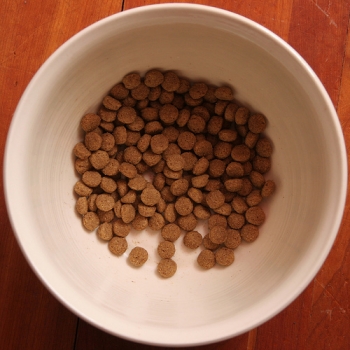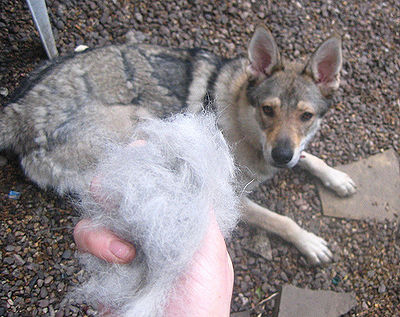 |
Only about 10% of pet allergies are food related. Sometimes what is considered a food allergy is actually food intolerance.
A food allergy occurs when the immune system believes an ingredient is harmful and sends antibodies to fight the invader.
Food intolerance is when the digestive system cannot digest a certain ingredient or ingredients.
Some foods that commonly cause allergic reactions or intolerance include chicken, lamb, beef, eggs, fish, corn, wheat and soy. All of these can be found in most commercial pet foods in some form.
Allergy symptoms can be skin rash, hives, itching, hair loss, chewing feet, frequently inflamed or infected ears, hot spots, respiratory problems (usually seen in cats), scratching or rubbing face, nausea, vomiting.
Food intolerance symptoms may be gas, bloating, diarrhea, vomiting.
Treatment consists of eliminating the present diet and feeding foods the pet has not eaten before – a protein and a carbohydrate. There are commercial diets available that use a novel source of protein such venison, bison, duck, rabbit and a carbohydrate such as potatoes or sweet potatoes. Some pet food manufacturers use hydrolized proteins and carbohydrates that are broken down so they don’t trigger an allergic reaction. You can opt to cook a homemade diet and control the ingredients yourself. Check with a veterinary nutritionist to get the proper balance – amount of daily food for your particular pet, vitamins, minerals, supplements.
Your pet needs to be on this novel diet for about 12 weeks. Your pet is not allowed to eat anything but this diet. That means no treats, flavored medications or supplements, rawhide, pigs ears, cow hooves. Some companies make treats that are hypoallergenic, but don’t confuse them with treats for sensitive stomachs. Canned diets can be used as treats. Just cut the food into bite-size pieces and freeze or bake.
If your pet accidentally eats other food or dips into the cat’s litter box, keep a record for your veterinarian.
After the period of the food trial, a different ingredient can be added every 2 weeks. If your pet shows any symptoms after any addition, you will know who the culprit is and can eliminate it. This course of treatment may show you what ingredient(s) is causing your pet’s problems and a diet can be formulated to exclude that ingredient(s).
Your pet may have been eating the same food for a long time and then develop an allergy to one or more ingredients in it. Watch for any allergic reaction to the novel food.
If you suspect your pet has allergies, it’s time to visit the vet to determine if it is an allergy so you can proceed with treatment and relieve your pet’s discomfort.


